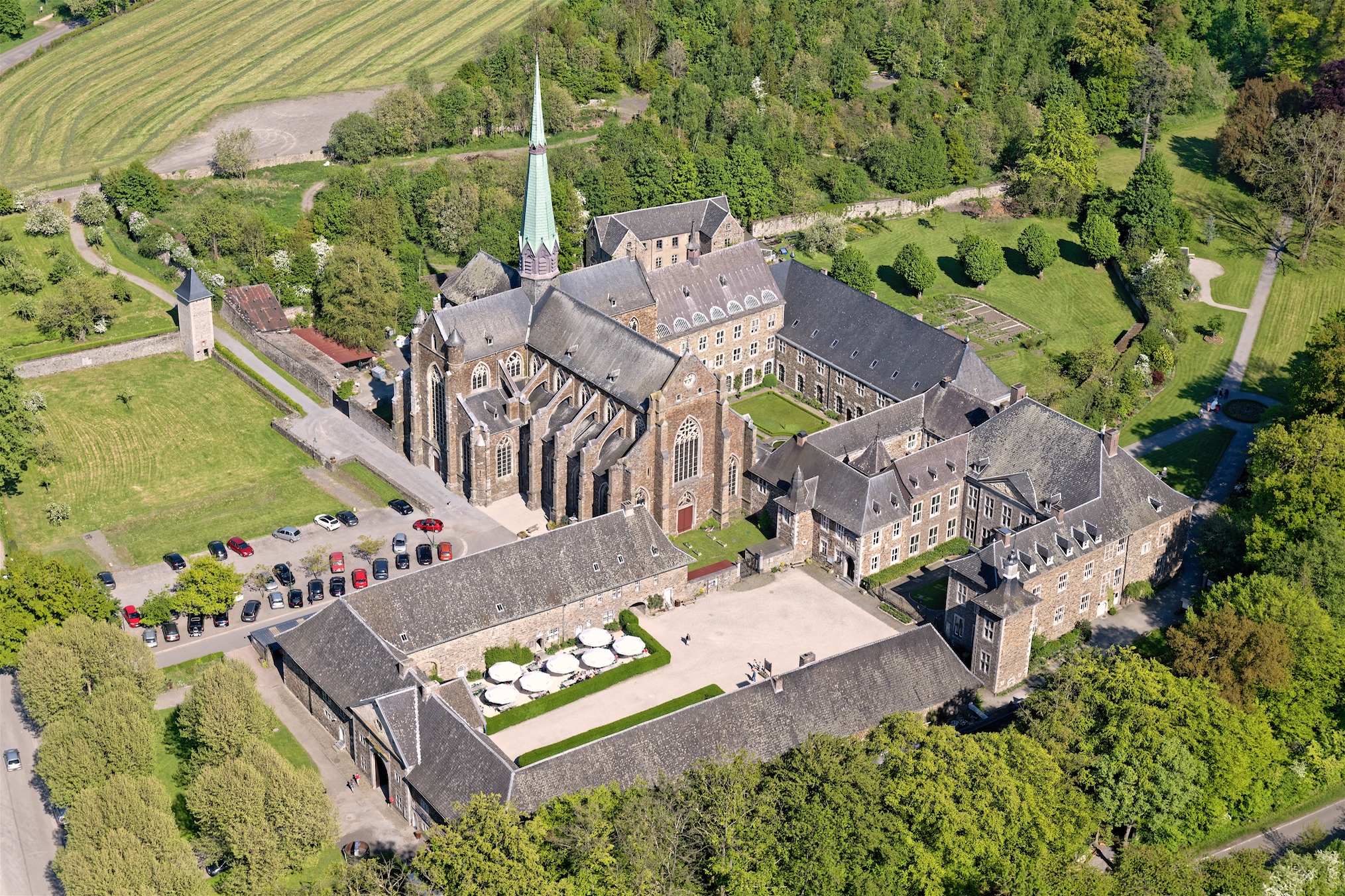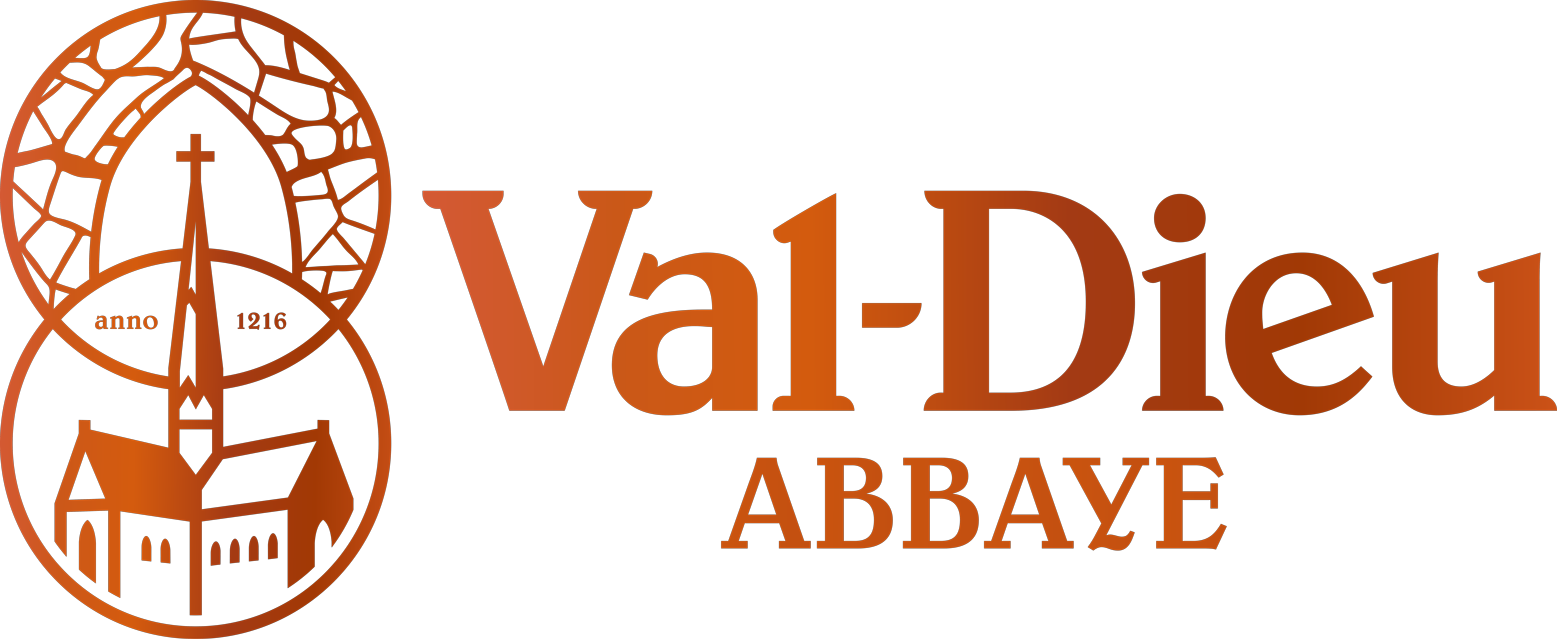The Val-Dieu Abbey was founded in 1216
The Cistercian monks would settle in uninhabited areas. Their goal was to withdraw from the world, choosing inhospitable locations often in valleys where the only means of subsistence was working to clear and reclaim the land. It is important to recall that the Cistercian project, initiated by St. Robert of Molesme, was meant to be a return to the Rule of St. Benedict. The Berwinne valley fit this lifestyle. Situated on a ridge between the County of Dalhem and the Dukedom of Limburg, the establishment of Val Dieu initiated the land clearing which was to ultimately create the air and appearance so characteristic of the Herve countryside.
The influence of the Abbey was, first and foremost, regional. A place of spiritual and intellectual formation but also an economic center for the Herve Plateau, the Cistercian monastery did not escape any conflict: struggles between feudal lords, wars of succession, and religious wars led ultimately to dispersion of the community during the French Revolution.
The buildings suffered with each conflict. The church was destroyed or burned four times, reconstructed each time according to the original Cistercian design. The space and architecture of the overall design was meant to be the perfect synthesis between the search for God and the fulfilment of humanity.
Following the turmoil of the Revolution, the restoration of the Abbey and the return of the monks in the middle of the 19th century enabled Val Dieu to remain the only original Cistercian site still alive today in Belgium.
In March 2001, the last three monks left the Abbey of Val Dieu to reside in other Cistercian abbeys.
The Cistercian Order decided then to entrust the Abbey to a Christian Community.

